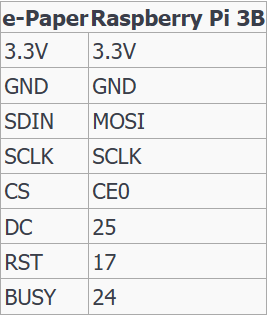

Introduction
This product is an E-paper
device adopting the image display technology of Microencapsulated
Electrophoretic Display, MED. The initial approach is to create tiny
spheres, in which the charged color pigments are suspending in the
transparent oil and would move depending on the electronic charge. The
E-paper screen display patterns by reflecting the ambient light, so it
has no background light requirement. Under sunshine, the E-paper screen
still has high visibility with a wide viewing angle of 180 degree. It is
the ideal choice for E-reading.
Communication protocol
Working Voltage: 3.3V / 5V
I/O interface: SPI
Display color: Black, White and Yellow
Resolution: 152X152
Gray Level: 2
Local Refresh time: 0.3s
Global Refresh time: 2s
Refresh Power: 26.4mW(typ.)
View Angle: >170°
Note:
Different from the traditional SPI protocol, the data line from the
slave to the master is hidden since the device only has display
requirement.
CS is slave chip select, when CS is low, the chip is enabled.
DC is data/command control pin, when DC = 0, write command, when DC = 1, write data.
SCLK is the SPI communication clock.
SDIN is the data line from the master to the slave in SPI communication.
SPI communication has data transfer timing, which is combined by CPHA and CPOL.
CPOL determines the level of the serial synchronous clock at idle
state. When CPOL = 0, the level is Low. However, CPOL has little effect
to the transmission.
CPHA determines whether data is collected at
the first clock edge or at the second clock edge of serial synchronous
clock; when CPHL = 0, data is collected at the first clock edge.
There are 4 SPI communication modes. SPI0 is commonly used, in which CPHL = 0, CPOL = 0.
As
you can see from the figure above, data transmission starts at the
first falling edge of SCLK, and 8 bits of data are transferred in one
clock cycle. In here, SPI0 is in used, and data is transferred by bits,
MSB first.
How to use:
Working with Raspberry Pi
Installing libraries required
If
you want to connect your E-paper screen to Raspberry Pi, you should
install some necessary libraries, or else the Demo (click to download)
below may work improperly. For more information about how to install the
Raspberry Pi libraries, please visit the website: Libraries
Installation for RPi.
You can find the detailed presentation about the installations of libraries wiringPi, bcm2835 and python.
Hardware connection
Here is the connection between Raspberry Pi 3B and E-paper.

Expected result
After
the corresponding libraries installed, you can copy the relative
programs into your Raspberry Pi, and then enter the corresponding file.
BCM2835:
Execute the command: make, to compile the code and generate a file epd.
Execute the command: sudo ./epd, the program will run.
WringPi:
Execute the command: make, to compile the code and generate a file epd.
Execute the command: sudo ./epd, the program will run.
Python: Execute the command: sudo python main.py
The screen displays strings and shapes after whole screen refresh.
The screen displays images and the time after partial screen refresh. This demonstrates the partial refreshing capability.
Package includes:
1 X 1.54 Inch E-paper SPI Display Module
Note: all the descriptions and prices are subject to change without prior notice.
Free Shipping: No
Shipping Weight/Unit(g): 0.00
Std. Packing Qty. (pcs): 1